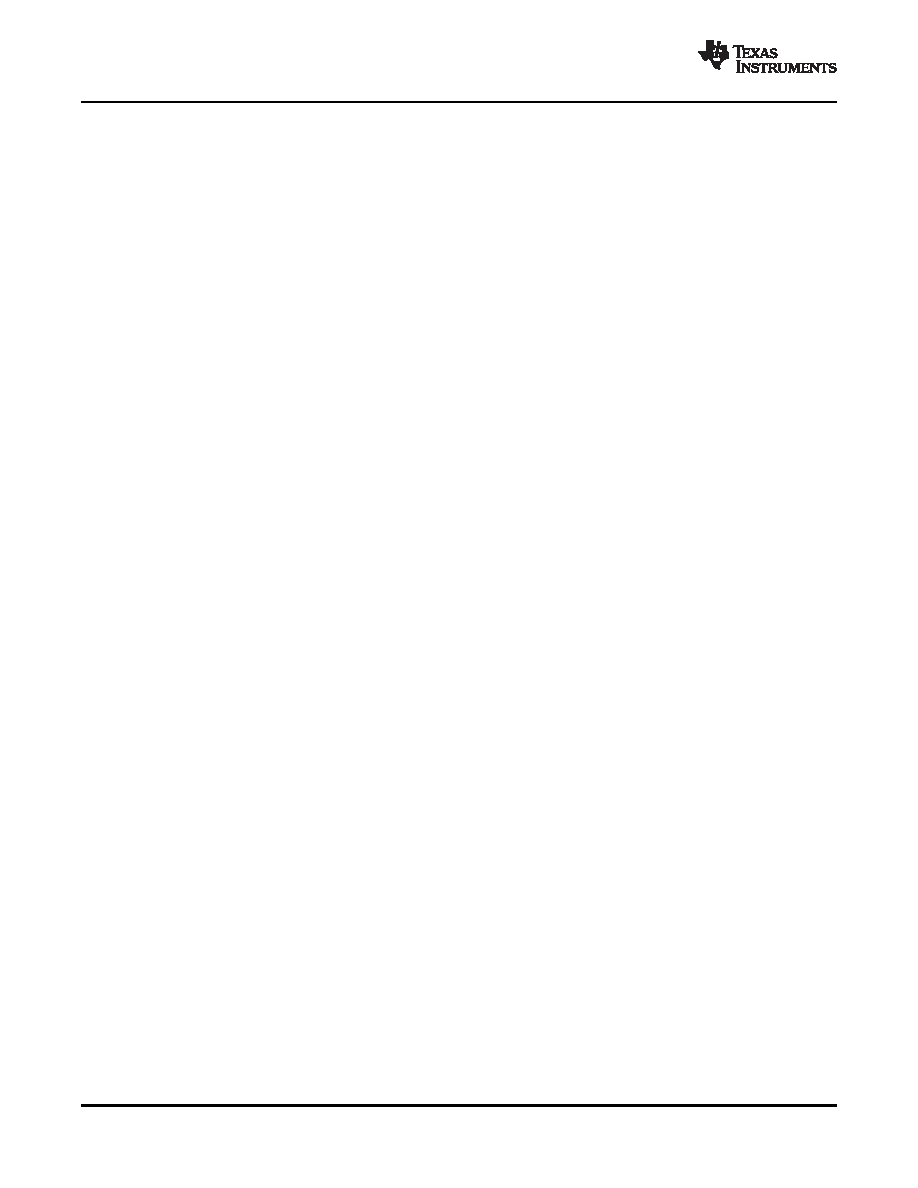- 您現(xiàn)在的位置:買賣IC網(wǎng) > PDF目錄98302 > TSC2117IRGZT (TEXAS INSTRUMENTS INC) SPECIALTY CONSUMER CIRCUIT, QCC48 PDF資料下載
參數(shù)資料
| 型號: | TSC2117IRGZT |
| 廠商: | TEXAS INSTRUMENTS INC |
| 元件分類: | 消費家電 |
| 英文描述: | SPECIALTY CONSUMER CIRCUIT, QCC48 |
| 封裝: | 7 X 7 MM, GREEN, PLASTIC, VQFN-48 |
| 文件頁數(shù): | 165/192頁 |
| 文件大小: | 2728K |
| 代理商: | TSC2117IRGZT |
第1頁第2頁第3頁第4頁第5頁第6頁第7頁第8頁第9頁第10頁第11頁第12頁第13頁第14頁第15頁第16頁第17頁第18頁第19頁第20頁第21頁第22頁第23頁第24頁第25頁第26頁第27頁第28頁第29頁第30頁第31頁第32頁第33頁第34頁第35頁第36頁第37頁第38頁第39頁第40頁第41頁第42頁第43頁第44頁第45頁第46頁第47頁第48頁第49頁第50頁第51頁第52頁第53頁第54頁第55頁第56頁第57頁第58頁第59頁第60頁第61頁第62頁第63頁第64頁第65頁第66頁第67頁第68頁第69頁第70頁第71頁第72頁第73頁第74頁第75頁第76頁第77頁第78頁第79頁第80頁第81頁第82頁第83頁第84頁第85頁第86頁第87頁第88頁第89頁第90頁第91頁第92頁第93頁第94頁第95頁第96頁第97頁第98頁第99頁第100頁第101頁第102頁第103頁第104頁第105頁第106頁第107頁第108頁第109頁第110頁第111頁第112頁第113頁第114頁第115頁第116頁第117頁第118頁第119頁第120頁第121頁第122頁第123頁第124頁第125頁第126頁第127頁第128頁第129頁第130頁第131頁第132頁第133頁第134頁第135頁第136頁第137頁第138頁第139頁第140頁第141頁第142頁第143頁第144頁第145頁第146頁第147頁第148頁第149頁第150頁第151頁第152頁第153頁第154頁第155頁第156頁第157頁第158頁第159頁第160頁第161頁第162頁第163頁第164頁當前第165頁第166頁第167頁第168頁第169頁第170頁第171頁第172頁第173頁第174頁第175頁第176頁第177頁第178頁第179頁第180頁第181頁第182頁第183頁第184頁第185頁第186頁第187頁第188頁第189頁第190頁第191頁第192頁

5.7.2
Touch-Screen Measurements
5.7.2.1 Conversion Controlled by the TSC2117 – Initiated by Touch Detect
5.7.2.2 Conversion Controlled by the TSC2117 – Initiated by the Host
5.7.3
Temperature Measurement
TSC2117
Low-Power Audio Codec With Embedded miniDSP, Stereo Class-D
Speaker Amplifier, and Smart Four-Wire Touch-Screen Controller
SLAS550A – APRIL 2009 – REVISED JUNE 2009
www.ti.com
The touch screen ADC either can be controlled by the host processor or can be self-controlled to offload
processing from the host processor. Writing to page 3/register 3, bit D7 sets the control mode of the
TSC2117 touch-screen ADC.
This mode can be set by writing to page 3/register 3, bit D7 and page 3/register 4, bit D7. In this mode,
the TSC2117 detects when the touch screen is touched and then causes the GPIO1 or GPIO2 line to go
low. At the same time, the TSC2117 starts up its internal clock. Assuming the part was configured to
convert XY coordinates, it then turns on the Y drivers, and after a programmed panel-voltage-stabilization
time, powers up the ADC and converts the Y coordinate.
If the screen is still touched at this time, the X drivers are enabled and the process repeats, but measuring
instead the X coordinate, storing the result in the X register.
If only X and Y coordinates are to be measured, then the conversion process is complete. If touch is still
there, then the foregoing conversion process is repeated again and again until touch is removed or the
SAR ADC is powered down. The time it takes to complete this process depends on the selected
resolution, internal conversion clock rate, panel voltage stabilization time, and precharge and sense times.
Precharge time can be set by writing to page 3/register 4, bits D6–D4. Sense time can be set by writing to
page 3/register 4, bits D2–D0. Voltage stabilization time can be set by writing to page 3/register 5, bits
D2–D0.
See Conversion Time Calculation, Section 5.7.9, for timing diagrams and conversion-time calculations.
In this mode, the TSC2117 detects when the touch screen is touched and causes the GPIO1 or GPIO2
line to go low. The host recognizes the interrupt request, and then writes to the ADC control register (on
page 3/register 3, bits D5–D2) to select one of the touch-screen scan functions. The host can either
choose to initiate one of the scan functions, in which case the TSC2117 controls the driver turn-on and
wait times (e.g., on receiving the interrupt, the host can initiate the continuous scan function (X-Y), after
which the TSC2117 controls the rest of conversion).
See Conversion Time Calculation, Section 5.7.9, for timing diagrams and conversion-time calculations.
In some applications, such as battery charging, a measurement of ambient temperature is required. The
temperature measurement technique used in the TSC2117 relies on the characteristics of a
semiconductor junction operating at a fixed current level. The forward diode voltage (Vj) has a well-defined
characteristic versus temperature. The ambient temperature can be predicted in applications by knowing
the 25
°C value of the V
j voltage and then monitoring the variation of that voltage as the temperature
changes.
The TSC2117 offers two modes of temperature measurement. The first mode requires a single reading to
predict the ambient temperature. A diode, as shown in Figure 5-42, is used during this measurement
cycle. This voltage is typically 600 mV at 25
°C with a 20-A current through it. The absolute value of this
diode voltage can vary a few millivolts. The temperature coefficient of this voltage is typically 2 mV/
°C.
During the final test of the end product, the diode voltage at a known room temperature is stored in
nonvolatile memory. Further calibration can be done to calculate the precise temperature coefficient of the
particular device. This method has a temperature resolution of approximately 0.4
°C/LSB and accuracy of
approximately
±3°C with two-temperature calibration. Figure 5-43 and Figure 5-44 show typical plots with
single and two-temperature calibration, respectively.
APPLICATION INFORMATION
74
相關(guān)PDF資料 |
PDF描述 |
|---|---|
| TSC2300IPAGG4 | SPECIALTY CONSUMER CIRCUIT, PQFP64 |
| TSC2300IPAGR | SPECIALTY CONSUMER CIRCUIT, PQFP64 |
| TSC2300IPAG | SPECIALTY CONSUMER CIRCUIT, PQFP64 |
| TSC2300IPAGRG4 | SPECIALTY CONSUMER CIRCUIT, PQFP64 |
| TSC2301IPAGR | SPECIALTY CONSUMER CIRCUIT, PQFP64 |
相關(guān)代理商/技術(shù)參數(shù) |
參數(shù)描述 |
|---|---|
| TSC2117IRGZT | 制造商:Texas Instruments 功能描述:Touch Screen Controller IC |
| TSC22 | 制造商:未知廠家 制造商全稱:未知廠家 功能描述:EURO TERMINAL BLOCKS |
| TSC2200 | 制造商:BB 制造商全稱:BB 功能描述:PDA ANALOG INTERFACE CIRCUIT |
| TSC2200EVM | 功能描述:觸摸傳感器開發(fā)工具 Touch Screen Contr Eval Mod RoHS:否 制造商:Cypress Semiconductor 工具用于評估: 接口類型: 工作電壓: 最大工作溫度: |
| TSC2200IPW | 功能描述:觸摸屏轉(zhuǎn)換器和控制器 Prog 4-Wire w/12-Bit 125KHz ADC & Key Ifc RoHS:否 制造商:Microchip Technology 類型:Resistive Touch Controllers 輸入類型:3 Key 數(shù)據(jù)速率:140 SPS 分辨率:10 bit 接口類型:4-Wire, 5-Wire, 8-Wire, I2C, SPI 電源電壓:2.5 V to 5.25 V 電源電流:17 mA 工作溫度:- 40 C to + 85 C 封裝 / 箱體:SSOP-20 |
發(fā)布緊急采購,3分鐘左右您將得到回復。